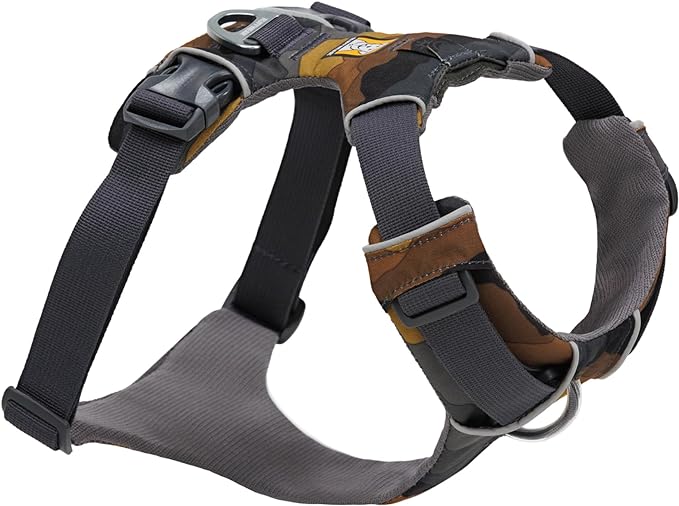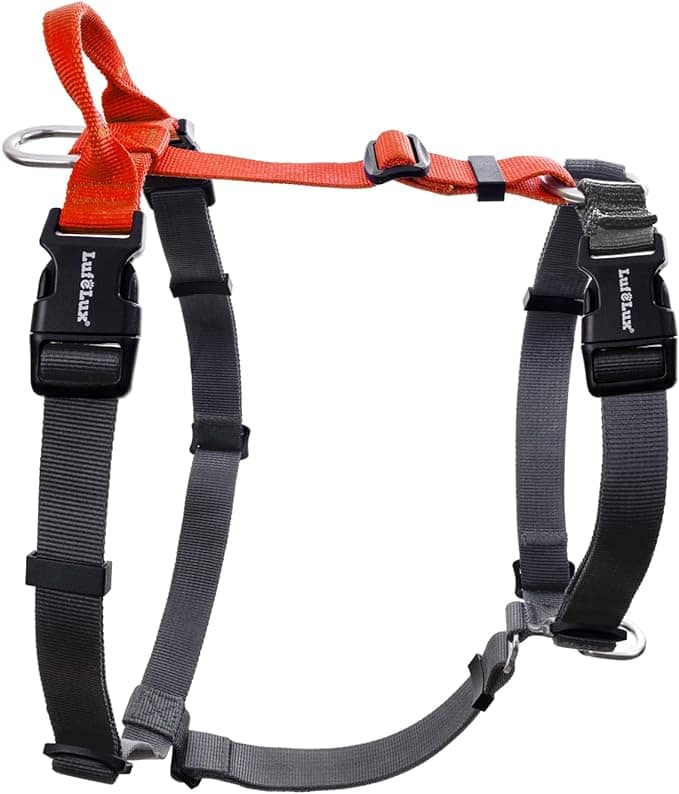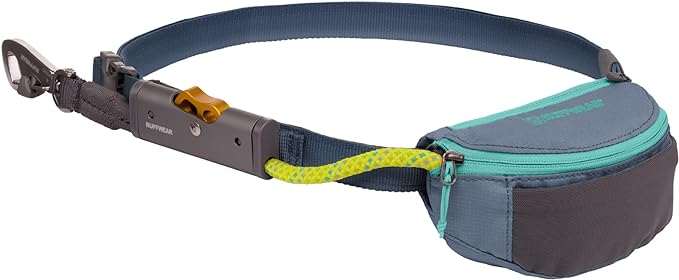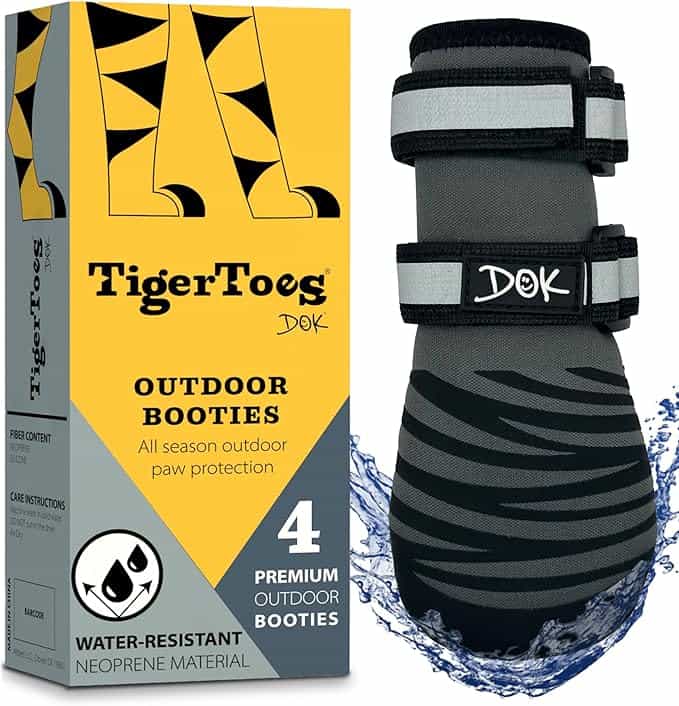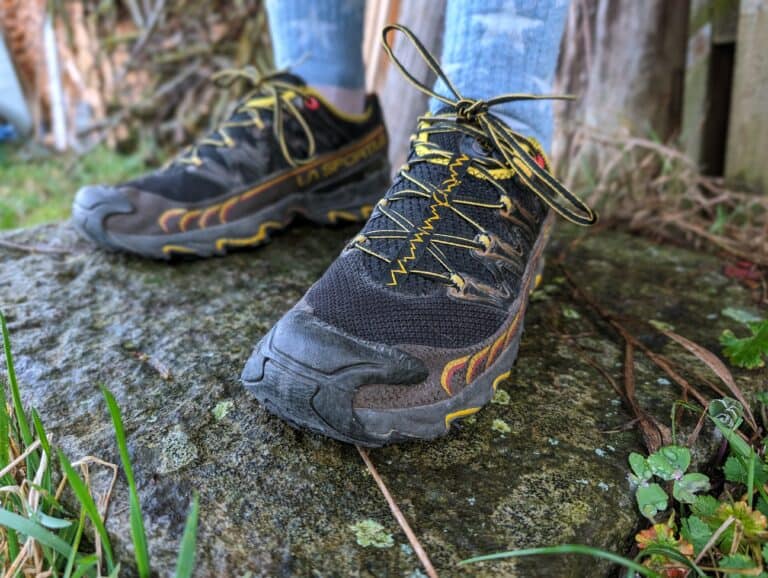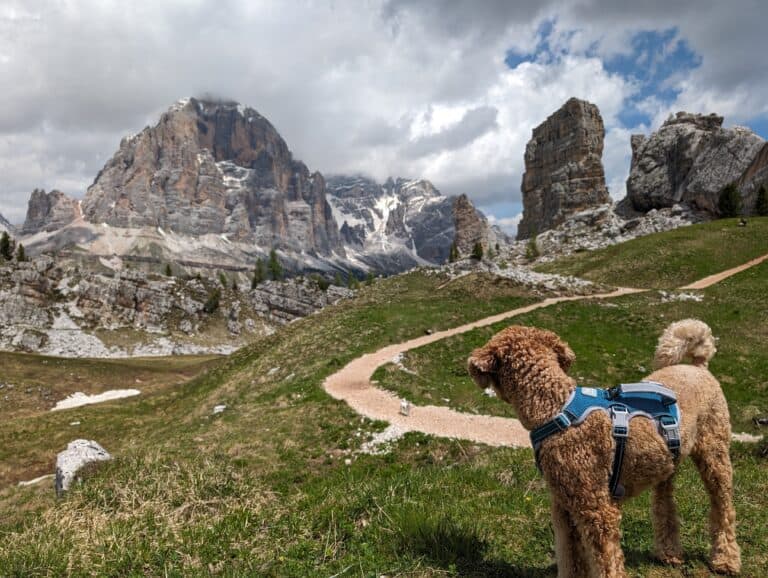Hiking with Dogs 101: A Detailed How-to Guide
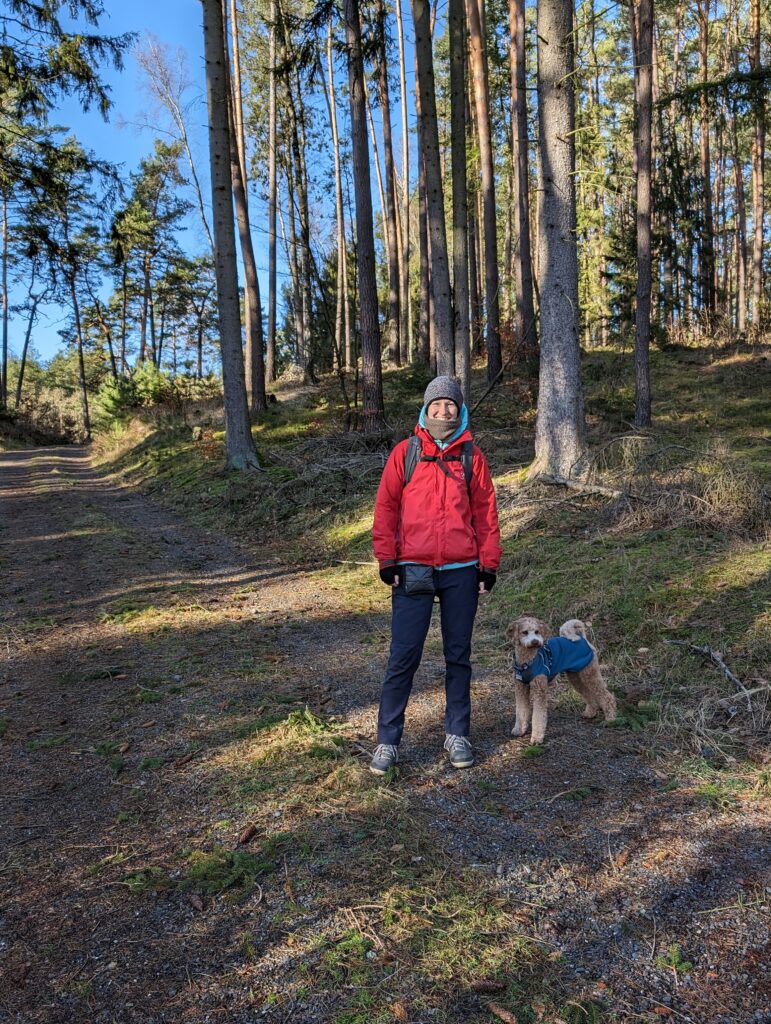
Setting out into the great outdoors with your furry companion by your side can transform a mundane hike into an extraordinary shared adventure. The mutual benefits of hiking with dogs are expansive, not only strengthening the bond between you and your canine friend but also bringing more health and happiness into our lives. As we walk through forests and ascend hills, the heartwarming feeling of witnessing your dog’s boundless enthusiasm is, quite frankly, unbeatable.
Preparation for Hiking with Your Dog
Embarking on a hike with your dog is not just about lacing up your boots and hitting the trail. It’s a process that requires thought and preparation to ensure the safety and enjoyment of both you and your canine companion. Here’s how we can get ready for a successful outing:
- Health Check and Vaccinations:
- Before setting out, it’s crucial to ensure your dog’s vaccinations and preventatives are up-to-date. This is a fundamental step to protect your furry friend from common outdoor threats such as fleas, ticks, and heartworms. A visit to the vet for a general check-up is also wise, especially to discuss your planned hike and any specific concerns you might have.
- Training and Obedience:
- A well-trained dog makes for a happier hiking experience. Teaching your dog basic obedience commands like sit, stay, and loose leash walking is essential. Additionally, practice focus work to help your dog handle distractions and train safety cues like “leave it” and “drop it.” If you’re considering off-leash hiking, a reliable recall is non-negotiable.
- Physical Preparedness:
- Just like us, dogs need to build up their endurance. Gradually increase your dog’s exercise leading up to the hike. Start with shorter hikes and slowly increase the distance and difficulty as your dog’s fitness improves. Keep an eye out for signs of fatigue or distress and adjust your plans accordingly.
- Trail Selection:
- Not all trails are suitable for all dogs. Choose a route that matches your dog’s breed, age, and fitness level. Avoid trails with steep drops, rocky terrain, bodies of water, and those that may expose your dog to extreme temperatures. Remember, what might be a walk in the park for a young, agile dog could be a challenge for an older or brachycephalic breed.
- Identification and Microchipping:
- Safety first: ensure your dog is microchipped and wearing identification tags. This simple step can be the difference between being reunited with your dog or not if they wander off.
- Leash and Trail Etiquette:
- Keeping your dog on a leash is not only often a legal requirement, but it also protects wildlife, the environment, and other trail users. Always clean up after your dog and respect the shared space to maintain a positive experience for everyone.
- Emergency Preparedness:
- Familiarize yourself with basic first aid for dogs and keep emergency contact numbers handy. It’s always better to be prepared for the unexpected than to be caught off guard.
By taking these steps, we set the stage for a hike that is enjoyable and safe, fostering a deeper bond with our dogs as we explore the beauty of nature together. Remember, preparation is the key to any successful adventure, and when it comes to hiking with dogs, it’s no different.
Essential Gear for Your Canine Companion
When we dive into the realm of hiking with dogs, gearing up your four-legged pal is as crucial as packing your own backpack. Here’s a rundown of the must-have items to ensure your pup is trail-ready:
- Harness: Starting with the basics, a comfortable harness such as the Ruffwear Front Range Dog Harness is essential. These are not just for control and safety but also for attaching identification tags and a leash.
- Leash: The Ruffwear Hitch Hiker comes highly recommended, offering flexibility and freedom while ensuring your dog stays close, especially in areas where a leash is required by law.
- Identification: Never overlook the importance of ID tags and microchipping. These small details can be lifesavers, literally, if your dog decides to go on an unexpected solo adventure.
- Hydration and Nutrition: Water is life, and for your furry friend, having a collapsible bowl along with a clean water supply is non-negotiable. You can also use a bottle like LumoLeaf which doubles as drinking bowl. Pack extra food for both you and your dog in case your return is delayed.

- First Aid Kit: A canine first aid kit is your first line of defense against injuries. Stock it with essentials like hydrogen peroxide, scissors, bandages, and a small sock or bootie to protect injured paws. It’s a small addition that can make a big difference.
Read more
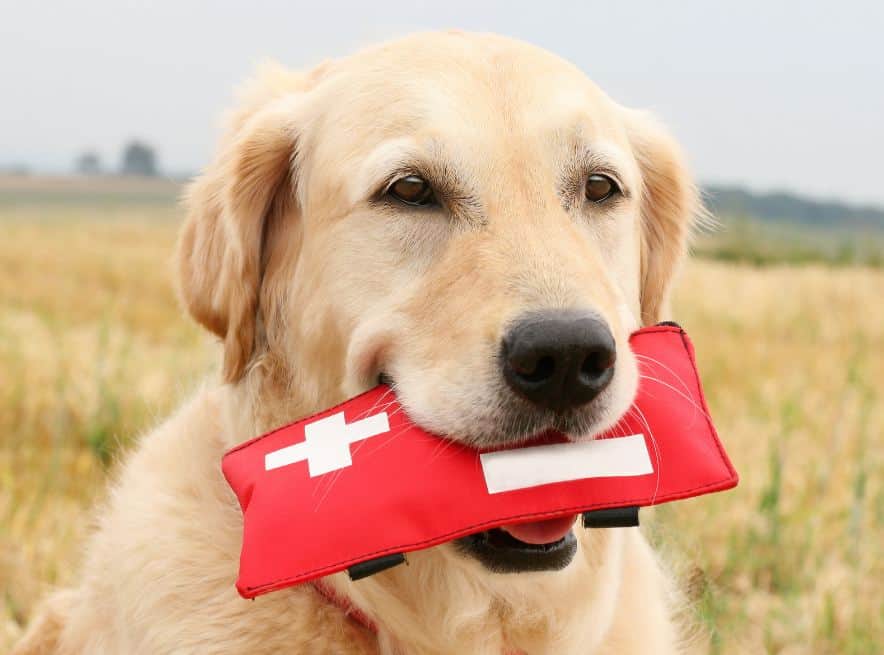
- Visibility and Protection: Reflective jackets or accessories, and light-up leashes or collars like high visibility hiking vests ensure you can keep an eye on your dog in low light conditions. And don’t forget booties to shield their paws from rough terrain, as well as dog-friendly insect repellent and sun protection to keep those pesky bugs and harmful rays at bay.
- Waste Management: Poop bags or a small trowel are a must to keep the trails clean for everyone.
- Carrying Gear: For those just-in-case moments, a fabric sash or a sturdy carrying device is essential for helping an injured or exhausted dog. Remember, the gear you choose should match the size and weight of your dog.
Before you set foot on the trail, take the time to acclimate your dog to their new gear. A comfortable dog is a happy hiking companion. And don’t forget to care for and repair your gear regularly; it’s an investment in your dog’s safety and your peace of mind.
As we prepare for hiking with our dogs, keep in mind that the gear we choose can enhance the hiking experience for our canine friends. From dog backpacks for carrying their own supplies to protective clothing for extreme weather, each item plays a role in ensuring a safe and enjoyable journey.
Maintaining Trail Etiquette and Safety
As we continue our journey hiking with dogs, it’s crucial to uphold trail etiquette and safety for an enjoyable experience for all. Here are some pointers to keep in mind:
- Leash Laws and Wildlife Protection: Always leash your dog on hiking trails, particularly in populated areas. This not only ensures your dog’s safety from unexpected encounters with wildlife but also helps avoid potential fines. In areas known for coyote sightings, staying alert and keeping your dog on a non-retractable, short leash can prevent dangerous interactions.
- Waste Management: We all appreciate the great outdoors for its pristine beauty, so let’s do our part to keep it that way. Be sure to pick up after your dog and dispose of waste properly. Carrying extra poop bags is a small task that goes a long way in showing respect to fellow hikers and preserving the environment.
- Social Encounters on the Trail: It’s essential to train your dog in off-leash recall and socialization to prevent aggressive behavior towards other dogs and hikers. When passing others on the trail, keep your dog close and only allow greetings with permission from the other dog’s owner. This courtesy helps maintain control and ensures a pleasant experience for everyone.
Additionally, for both your and your dog’s protection, consider carrying a pepper spray, flashlight, or air horn. These tools can be invaluable in deterring wildlife and ensuring safety in unexpected situations. Remember, respecting other hikers and dogs by giving them space and keeping your dog under control contributes to a positive trail culture. And finally, avoid hiking in areas where dogs are not allowed. This helps prevent conflicts and ensures that everyone can enjoy their outdoor adventure.

Dealing with Hazards and Emergencies
As we venture into the wilderness to hike with our dog, it’s essential to anticipate and prepare for potential hazards and emergencies. Here’s how we can proactively protect our pets and ensure we’re ready for any situation that may arise on the trail:
- Up-to-Date Vaccinations: Before we hit the trails, it’s imperative to ensure our furry companions are protected against common diseases. By keeping our pets’ vaccinations current, we’re not only safeguarding their health but also contributing to the well-being of other animals we may encounter. It’s a responsible step every pet owner should take before embarking on outdoor adventures. For a deeper dive into the importance of vaccinations, check out these insights on dog hiking dangers and how to avoid them.
- Flea, Tick, and Heartworm Prevention: We all know that prevention is better than cure. Administering flea, tick, and heartworm preventative treatments is a critical part of the pre-hike routine. These tiny critters are not only a nuisance but can also pose serious health risks to our dogs. By taking this preventative measure, we’re ensuring that our hiking with dogs experience remains a joyful and itch-free adventure.
- Medical Records on Hand: When we’re crossing state lines or venturing far from home, it’s a smart move to bring a copy of our pet’s medical records. Should an emergency occur, having these documents readily available can significantly speed up the treatment process, allowing veterinarians to make informed decisions quickly. This preparation can make all the difference when time is of the essence.
By integrating these preventative measures into our hiking preparations, we’re setting the stage for a safe and enjoyable experience. As we lace up our hiking boots and secure our dog’s leash, we can embark on our journey with peace of mind, knowing we’ve taken every precaution to protect our loyal companions.
Hiking with Dogs: After the Hike Recovery and Care

After our hiking adventure, it’s vital to focus on our dog’s recovery and care to ensure they’re ready for the next trail we tackle together. Here’s a step-by-step guide to post-hike dog care:
- Rehydration:
- Offer your dog plenty of water, but remember to avoid giving too much too quickly. This can help prevent water intoxication, a rare but serious condition. It’s all about pacing—allow your dog to drink small amounts at regular intervals as you both unwind from the hike.
- Post-Hike Inspection:
- Conduct a thorough inspection of your dog as soon as you finish your hike. This means checking their coat, skin, paws, and between their toes. Look for any signs of cuts, scrapes, or punctures and clean and dress wounds promptly. For severe injuries, don’t hesitate to consult a vet.
- Coat Care:
- Brush out your dog’s coat to remove any dirt, debris, and tangles. This not only keeps their coat clean but also allows you to check for any hidden insects like ticks or fleas. If you find any, remove them immediately and treat any insect bites or stings right away to prevent discomfort or infection.
- Paw Protection:
- Our dog’s paws can take a beating on the trails. Apply a moisturizing paw balm to soothe their sore or raw toe beans. Regularly check for abrasions and consider a protective balm before hikes to help prevent injuries in the future.
- Bath Time:
- If your dog has rolled in mud or brushed up against plants, a bath might be in order. Use a dog-specific shampoo and give them a gentle rinse down, which can help remove any potential irritants from their skin and coat.
- Emergency Planning:
- Always have an emergency plan in place. If you encounter any issues that concern you post-hike, don’t hesitate to reach out to your vet. Being proactive about your dog’s health can make all the difference.
- Routine Vet Check-Ups:
- Schedule regular veterinary check-ups to keep tabs on your dog’s health. This is especially important if you’re both avid hikers, as it helps address any concerns related to their physical activities.
By following these steps, we ensure our furry friends remain happy and healthy, ready for whatever adventures lie ahead. Remember, taking care of our dogs after hiking is just as important as the preparation before it. So let’s give our pups the post-hike pampering they deserve, keeping those tails wagging after every trail we conquer together.
Conclusion
Through careful preparation, the right gear, and observance of trail etiquette and safety principles, we have learned that hiking with dogs can be a rewarding experience that enriches the bond between human and canine. This guide has provided essential knowledge on how to ensure our furry companions are equipped, safe, and happy on the trails, reinforcing the significance of responsible pet ownership and respect for the environment. Remembering these tips will help adventurers and their dogs enjoy countless expeditions through the wonders of the great outdoors.
FAQs
Is hiking good for my dog?
Yes, hiking is mentally stimulating for dogs. It provides new and exciting smells, sights, and sounds that can help reduce boredom-related destructive behavior or depression. It’s also physically demanding and it provides health way of exercising.
What is the maximum distance a dog can hike?
An average-sized dog in good health can typically handle a hike of 5-10 miles without issue. With proper conditioning, they might be able to increase that distance to 20 miles or more in a day.
How much weight can my dog carry in a hiking backpack?
When determining how much weight your dog can carry in a hiking backpack, it’s essential to consider their body weight, fitness level, and age. The rule of thumb is to keep the total carrying weight, including the pack and its contents, under 25% of your dog’s body weight.
How do I protect my dog’s paws when hiking?
To protect your dog’s paws when hiking, consider using dog booties or paw wax to provide insulation and protection from rough terrain. Additionally, trim the fur around their paw pads and inspect their paws for any cuts or injuries after the hike to ensure their well-being.
What essentials should I bring when hiking with my dog?
When hiking with your dog, you should bring a collar or harness, a leash, identification tags and/or a microchip, water, food, a collapsible bowl, plastic bags or a small spade for waste, and a canine first aid kit.

